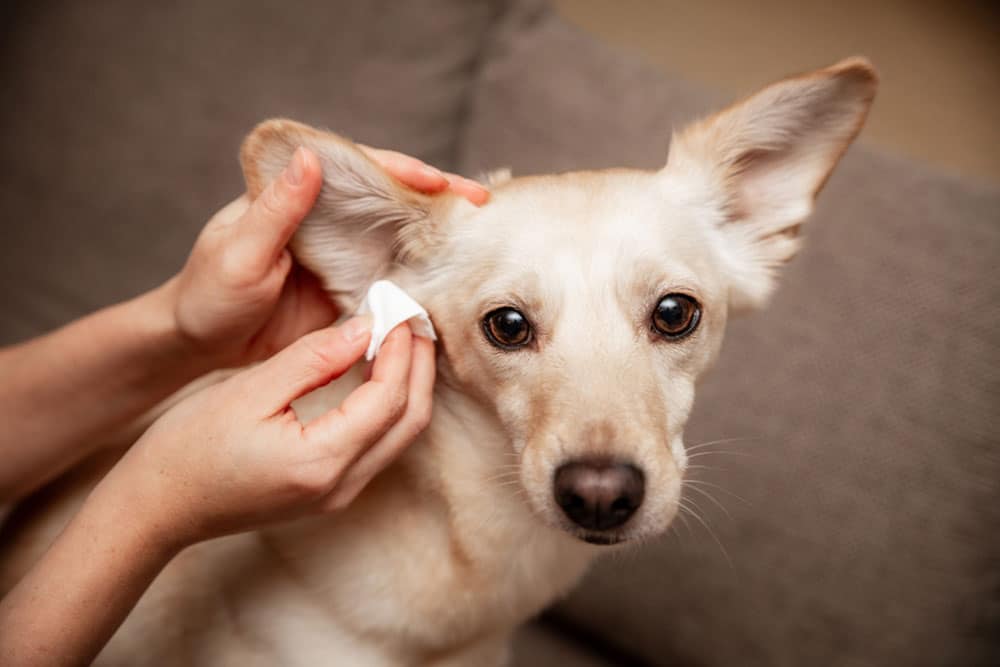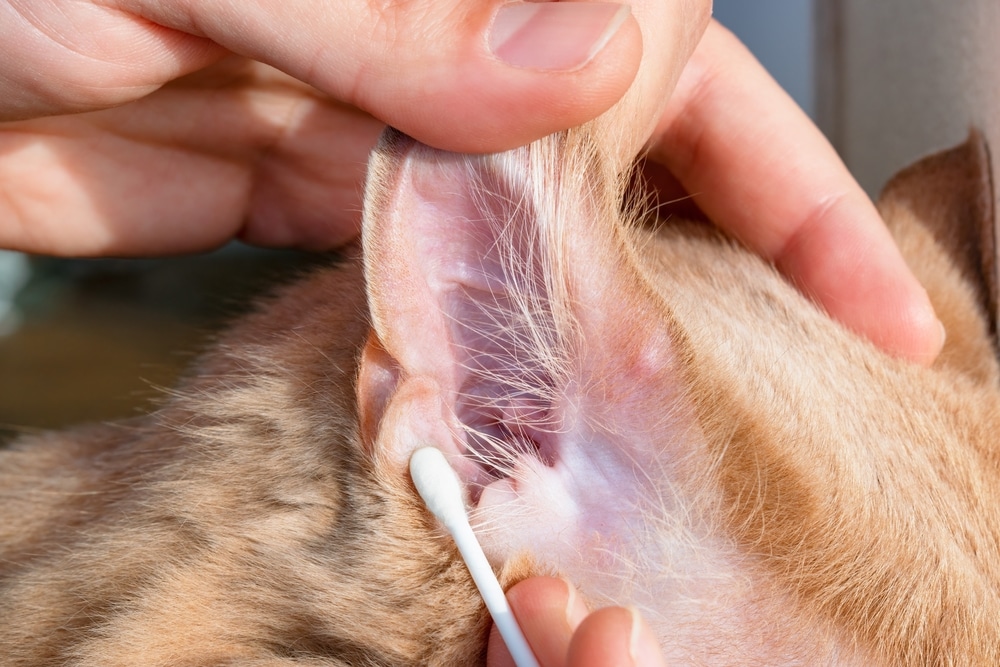Understanding and Treating Aural Hematomas
At South Shores Pet Clinic, we know how unsettling it can be to discover sudden swelling in your dog’s ear. A soft, often painful bump that appears out of nowhere is often more than just a cosmetic issue—it’s likely an aural hematoma, and while it may look dramatic, it’s treatable.
In this guide, we’ll break down what’s happening inside your dog’s ear, what causes it, how to treat it, and most importantly, how to prevent it from happening again.
What Is an Aural Hematoma?
An aural hematoma occurs when blood pools between the skin and cartilage of the ear flap (pinna), usually as a result of trauma. The result? A squishy, swollen, often warm lump that feels like a water balloon. It’s painful, frustrating for your dog, and often tied to an underlying ear issue that needs attention.
For more details, the American College of Veterinary Surgeons offers a clinical overview of this condition.
What Causes an Ear Hematoma?
Hematomas don’t form without a reason. Most are caused by vigorous head shaking or scratching, often in response to irritation from:
- Ear infections
- Allergies (a major culprit in many chronic ear issues -Learn more about dog allergies and their symptoms via the AKC)
- Ear mites
- Foreign bodies like foxtails or dirt
When a dog shakes its head forcefully—or scratches hard with a back paw—it can rupture small blood vessels, causing blood to leak and accumulate in the ear flap.
Why Prompt Treatment Matters
Ignoring an ear hematoma may seem tempting—especially if your dog seems to be tolerating it—but complications can escalate quickly:
- Persistent pain and sensitivity
- Permanent ear disfigurement (“cauliflower ear”) from scarring and fibrosis
- Rupture risk from increased pressure—especially if your dog hits their ear on a hard surface during a head shake
Warning: If a hematoma ruptures, the result can be shocking. Blood may spray across walls, floors, or furniture if your pet shakes their head. It can drip for hours and sometimes even days. It’s messy, painful, and traumatic for everyone.
Timely intervention doesn’t just reduce mess—it protects your dog from unnecessary pain and long-term damage.
What to Watch For: Signs of an Ear Hematoma
- A soft, swollen lump on one ear flap
- Reluctance to have the ear touched
- Frequent head shaking or scratching
- Tilting the head to one side
- Warm, thickened, or inflamed ear flap
If these signs sound familiar, schedule an evaluation. We’ll help determine what’s going on and what’s causing it.
How We Diagnose Ear Hematomas at South Shores Pet Clinic
A thorough exam allows us to confirm the hematoma and evaluate the underlying cause:
- Physical exam of the ear to assess size, pain, and location
- Otoscope exam to visualize the ear canal
- Ear cytology to check for infection, mites, or yeast
- Allergy evaluation, if symptoms are chronic or recurring
Read more about our diagnostic capabilities here.
Treatment Options for Ear Hematomas
1. Conservative Management (Mild or Early Cases)
Sometimes appropriate for small hematomas or dogs not showing severe discomfort:
- Cold compresses
- Anti-inflammatory medications (NSAIDs or corticosteroids)
- Close monitoring for changes
Note: These options rarely resolve the issue permanently. Hematomas often refill, and the underlying cause remains untreated.
2. Medical & Surgical Treatment (Most Common Route)
For more definitive, lasting results:
- Aspiration: Using a needle to drain the hematoma (can be temporary)
- Surgical Drainage: The most effective method, involving an incision to drain the blood, removal of clots, and sutures to prevent recurrence and promote healing
- Laser surgery: A minimally invasive option for select cases
To prevent recurrence, we always treat the underlying trigger, whether that means antibiotics, antifungals, allergy therapy, or parasite control.
Explore more about our surgical services, and learn how to properly examine and medicate your dog’s ears.
What Happens If a Hematoma Goes Untreated?
Without care, hematomas may:
- Harden and scar, leaving the ear permanently misshapen
- Rupture, causing open wounds and increased infection risk
- Continue to grow, leading to more discomfort and possible secondary complications
Daily Impact on You and Your Dog
- For Your Dog: Ongoing discomfort, disrupted sleep, difficulty resting on one side
- For You: Stress, possible cleanup after rupture, increased vet visits, and emotional fatigue
- For the Household: Daily care tasks, medication schedules, and the worry of watching a loved pet in pain
Tips To Keep Those Ears Healthy
- Clean your dog’s ears regularly—especially breeds with floppy ears or frequent allergy issues. Here’s how to do it right.
- Monitor for early signs of infection or discomfort—scratching, odor, discharge
- Manage allergies consistently with veterinary support
- Act quickly at the first sign of a hematoma or ear issue—ear health problems often worsen rapidly
- Keep ears from flapping and shaking– Check out No Flap™ Ear Wraps as a great option to keep ears secure and have easy access to medicate.

Frequently Asked Questions
Q: Can a hematoma resolve on its own?
Sometimes, but it may lead to scarring, pain, or recurrence. Treatment is usually recommended.
Q: Is surgery always necessary?
Not always—but it’s often the most effective long-term solution, especially for larger or recurrent hematomas.
Q: Will it come back after treatment?
Maybe. If the underlying issue (infection, allergies, mites) is addressed, recurrence is less likely.
We’re Here to Help—Every Step of the Way
Your dog’s ear health is important—and a hematoma is a sign that something deeper is going on. At South Shores Pet Clinic, we’re here to diagnose, treat, and prevent issues with compassionate, expert care.
If your dog is showing signs of ear discomfort or swelling, don’t wait—schedule an appointment today.







Leave A Comment